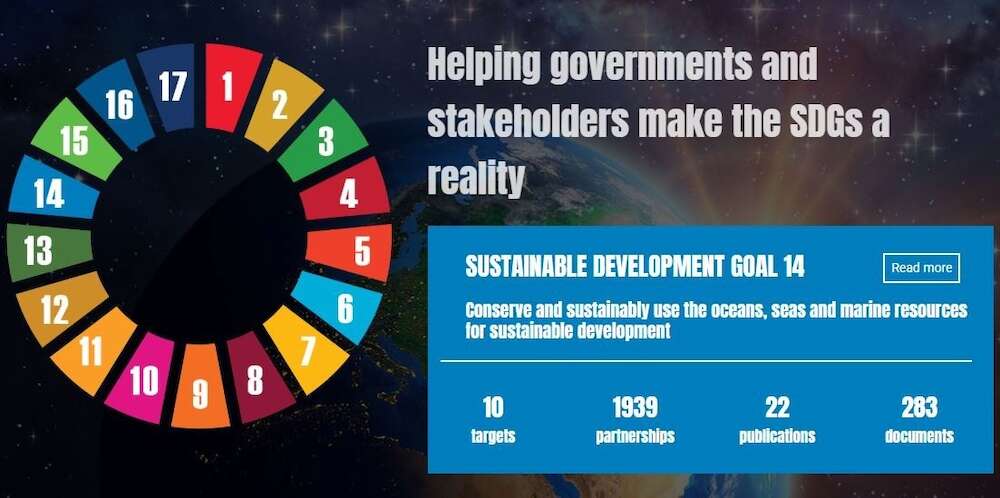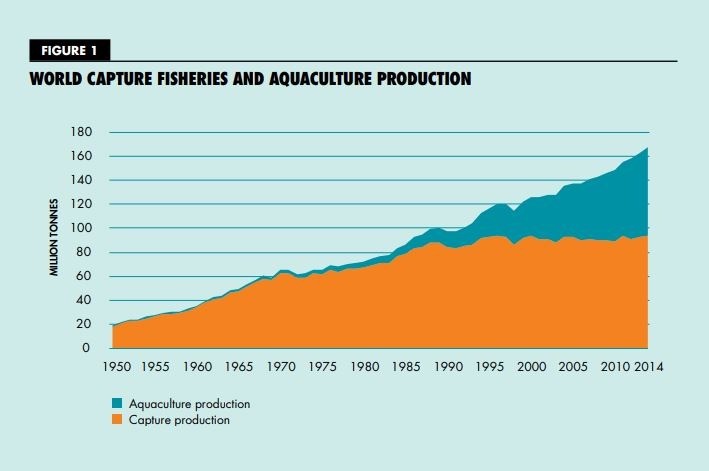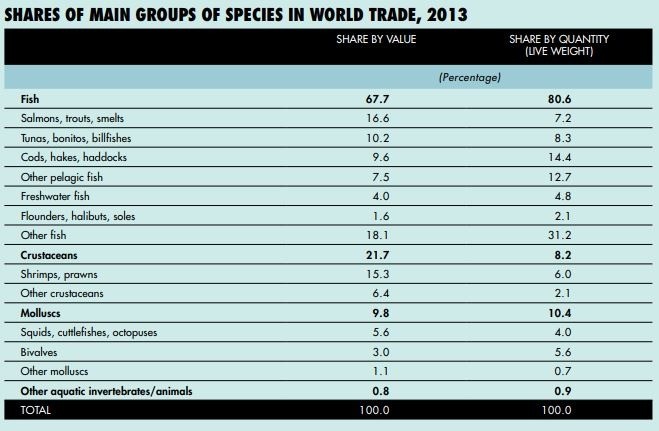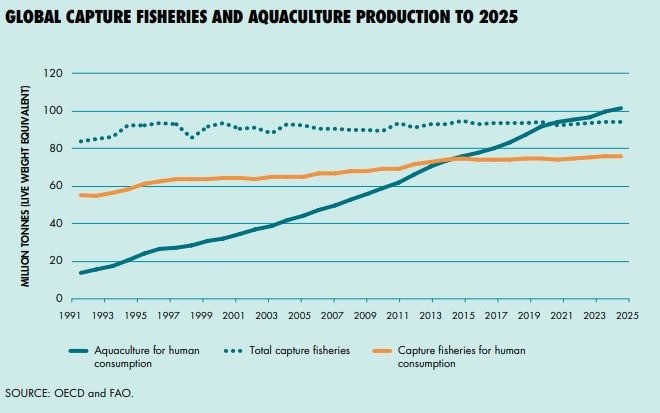The findings of the United Nations Food and Agriculture Organisation (FAO) were delivered as the world prepares to feed more than 9 billion people by 2050.
In a context of climate change, economic uncertainty and growing competition for natural resources, UN member states adopted the 2030 Agenda for Sustainable Development, which sees aquaculture as an essential part of future global food security.
The United Nations (UN) has 17 Sustainable Development Goals, a list of objectives intended to be met by world leaders by 2030. Each goal, aimed at protecting the planet and promoting prosperity for all.
Aquaculture will have a prominent role in delivering 4 of those goals:
Goal 1 No poverty: Aquaculture supports millions of jobs across the globe, including in developing countries where it can offer long-term, stable employment in some of the poorest communities.
Goal 2 Zero hunger: Aquaculture has the potential to provide 16.5 billion tons of fish per year. Many modern fish farms are actually more ecologically responsible than traditional fishing methods. Aquaculture does not pose a threat to non-target species (like sea turtles, dolphins and sea birds).
Goal 12 Responsible consumption and production: Aquaculture and in particular salmon farming is working hard to further reduce environmental impacts. Water management, efficient fish-meal use, responsible sourcing, health and welfare, control of escapes and energy consumption are among areas being addressed.
Goal 14 Life below water: Aquaculture in countries such as Scotland is leading the way in the drive for the sustainable use of the oceans, seas and marine resource - helping conserve the environment for future generations.
The Numbers
In 2014, consumption of fish and seafood sourced from aquaculture overtook capture fisheries for the first time. Fish harvested from aquaculture amounted to 73.8 million tonnes.
The number of fish for human consumption provided by aquaculture has been steadily increasing. Whereas it was only 7% in 1974, this share rose to 26% in 1994 and 39% in 2004. China has played a major role in this growth as it represents more than 60% of world aquaculture production, but other countries have also benefited.
The share of salmon and trout in world trade has also increased strongly in recent decades, becoming the largest single commodity by value in 2013.
Salmon has been instrumental in driving global demand and consumption, thanks to the shift from being primarily wild-caught to aquaculture-produced, with a decrease in its price and a strong increase in commercialisation.
Overall, the demand for salmon is growing steadily, in particular for the farmed Atlantic variety, and is projected to continue to grow in the next decade.
The share of aquaculture in total fishery production is set to surpass capture fisheries in 2021. By 2025, this share is expected to reach 52%.
This development highlights a new era, with aquaculture becoming the main driver of change in the sector. Nonetheless, capture fisheries will remain dominant for a number of species and vital for domestic and international food security.
Overall, the significant growth in aquaculture production has increased the world’s capacity to consume a diverse selection of nutritious seafood.




